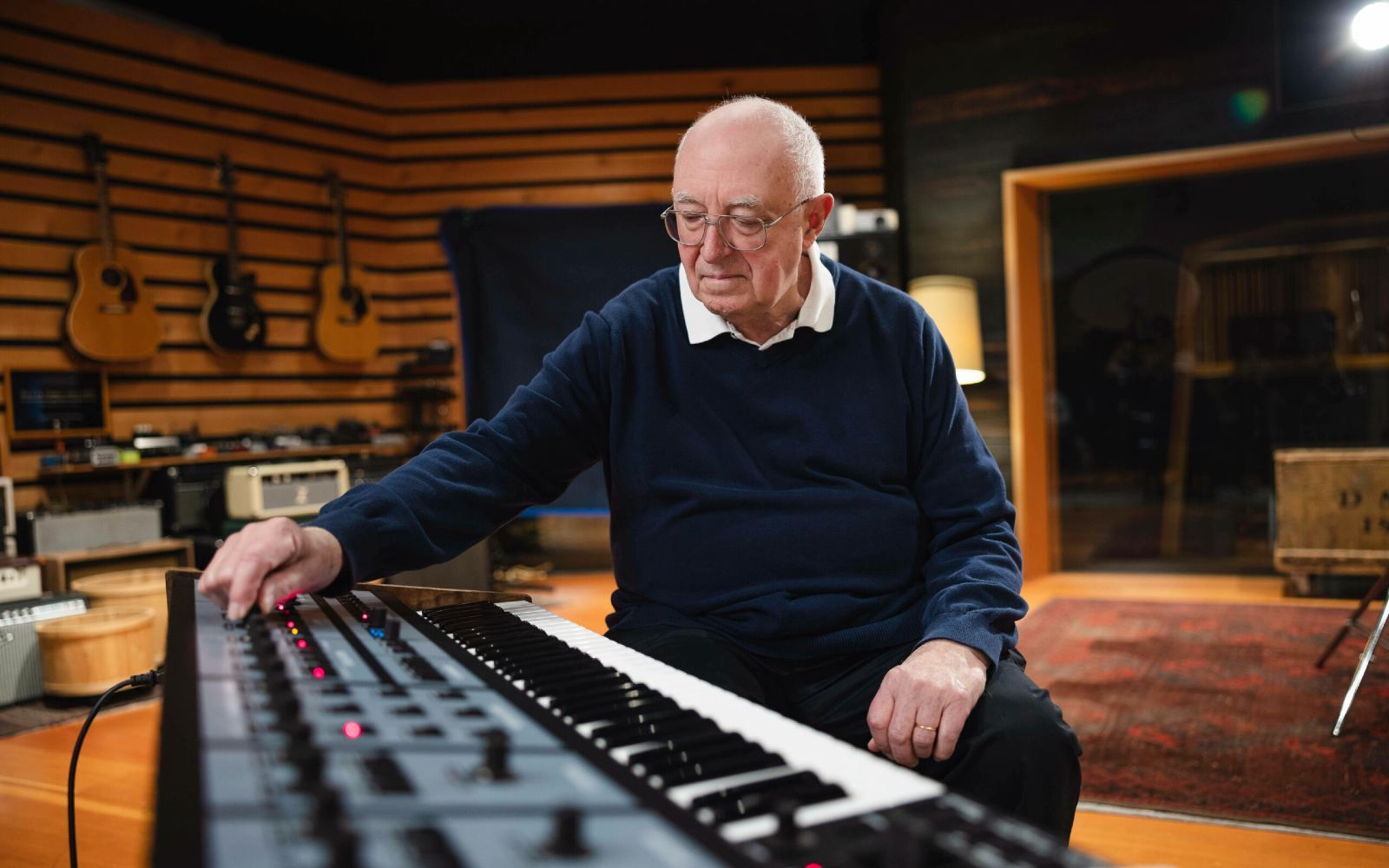Oberheim started in the late ‘60s and is responsible for the DMX drum machine in the ‘80s, OB-1 synthesizer in the ‘70s and then somewhat more recently, the OB-12 in 2000.
Read more features, columns and interviews here.
The Oberheim TEO-5 is a polysynth with more features than, as us Australians like to put it, you can poke a stick at. TEO stands for Thomas Elroy Oberheim, Oberheim’s founder. With decades of technological advances under their belt, Oberheim were often at the cutting edge of synthesis, the TEO-5 finally allowing Oberheim to feature everything they’ve ever wanted.
TEO-5
The TEO-5 is multiple famous synths distilled into one, featuring technology found in the OB-X, Four Voice, and TVS synths. Combining vintage warmth and modern technology, the TEO-5 might be the last synth you ever need… but we both know our shopping lists will keep growing regardless.
At its core, the TEO-5 features a 3.5-octave, 44-key premium-quality Fatar keyboard, and it is important to note that these are velocity sensitive as well for additional expression, feel and musicality. Independent MIDI In, Out and Thru jacks allow connectivity to and from external sources if you need it. Audio outputs are available, with independent left and right channels (unbalanced) as well as a stereo headphone jack and additional ¼” jacks for Footswitch and Pedal connectivity. Onboard storage features 256 factory programs with additional space for 256 custom user programs.
Sonics aside, the TEO-5 also includes a 64-step polyphonic sequencer to be used as either your rhythms to support your lead lines, or to further accentuate and augment your chords, solos and more!
What helps set the TEO-5 apart is their understanding that the grit, drive and push of a real analogue vintage synthesizer is often what we’re looking for! For that reason, the Master volume of the whole unit is accompanied by a global Overdrive knob to drive the synth’s sound if needed.
The LFO Panel offers both a Mono and Poly option, each having five selectable wave shapes via depressing the little buttons without your chosen wave. Punching the Sync button syncs the filters to tempo!
In use, the TEO-5 is, maybe unsurprisingly, very musical for something that packs so much under the hood. Some synths have a lot on offer, though their workflow can be convoluted. Convoluted the TEO-5 is not, and with clear labelling you’re able to make music in seconds, and easily tweakable to your heart’s content. You might find yourself reaching for the Overdrive as it toes the line between gritty and warm, and never harsh like some can be. Best of all, save your sounds and toggled between 16 banks or the individual Program Selector buttons to directly select a program.
Sonically, easily switch between classic 80s and synth wave style sounds and huge sine pads, or—pardon the pun—sawing leads. Combine them with simultaneously selectable wave shapes. Add effects to your sounds like Reverb, Delay or a vintage Phasor and Ring Modulations emulations. These effects are global!
Thanks to digital advancements, the depth of sound is huge, sub lows and sparkling highs being available via the direct outs on the back of the unit. Speaking further to the depth, the keyboard can be programmed into split mode, allowing you to split one half to an even lower octave while you continue noodling above!
‘Mixing’ the oscillators is accessed by selecting the oscillator and adjusting its level via the ‘Value’ button near the main Control panel, allowing you to blend together different oscillators at different levels for total control, with three shapes available per oscillator.
All in all, the TEO-5 encapsulates some of the best features that Oberheim are known for, in a practical, well thought and easy to use box. The TEO-5 itself is well built, robust enough to be giged with as well as trusted as a studio workhorse. Making noise is quick, fast and easy, and deep diving into the menus allow you to tweak as much or little as you might like.
In a word, the TEO-5 is practical. It contains everything you need, everything you’d want from an Oberheim, and then some, while doing away with some of the more convoluted processing and minutiae that some synths fall victim to. At its core, weighted, velocity sensitive keys make for a great playing experience, all of that bolstered by great sounds, easy save and recall, as well as plenty of preset sounds to get you started!
Connectivity is easy, again with all you need and nothing you don’t, making the TEO-5 a great solution as a standalone piece or when external MIDI is provided. Oberheim’s legacy is obviously in safe hands, both of the player and the builders of instruments as great as the TEO-5.
For more info, keep reading at Oberheim.

